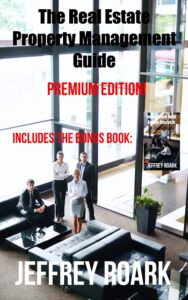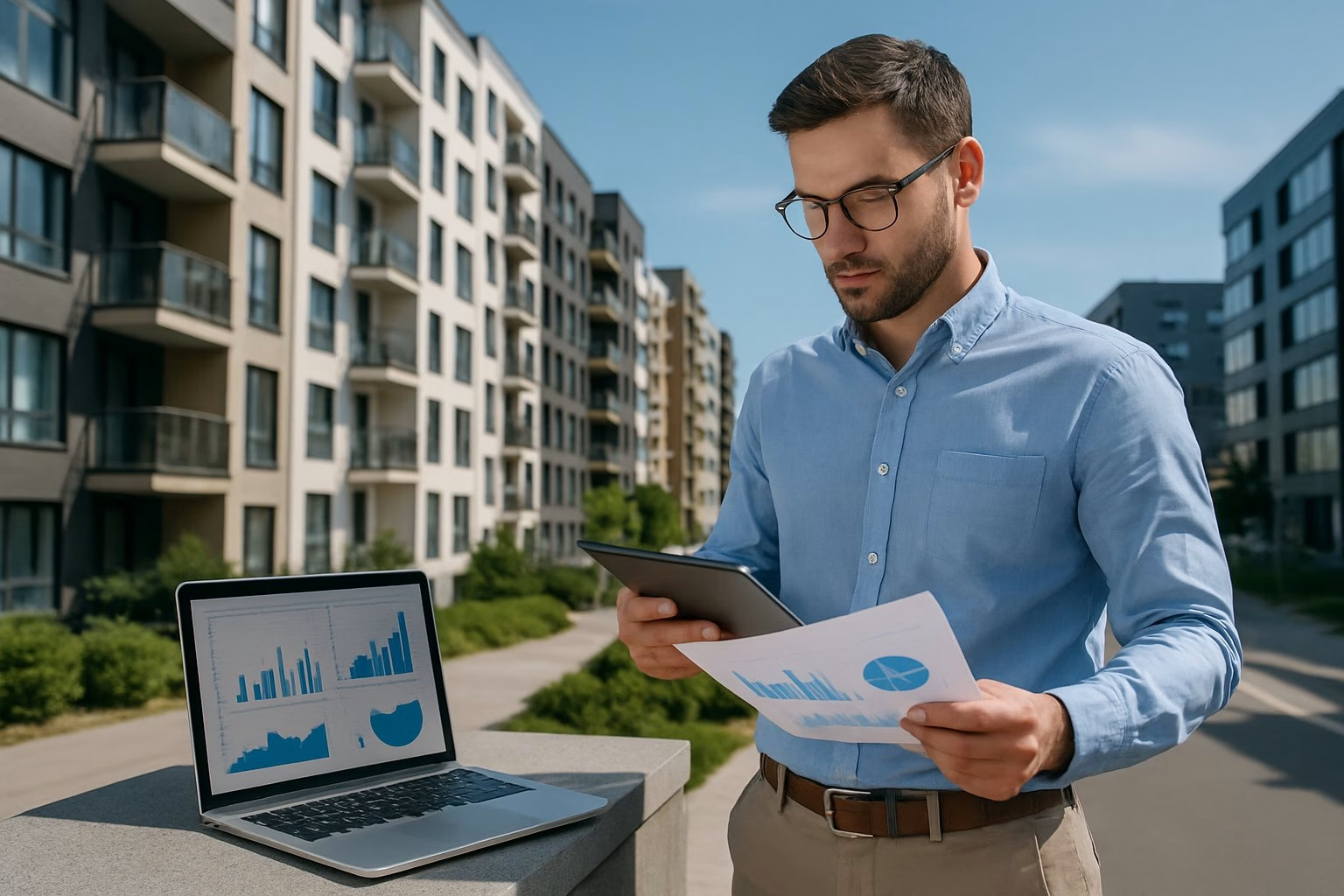Exploring alternative funding sources for real estate investments remains crucial in today’s competitive market.
Reverse mortgage real estate investing can serve as a strategic tool for those aged 62 and older who want to leverage their primary residence’s equity to expand their real estate portfolio.
Using a reverse mortgage line of credit enables you to tap into your home equity without monthly payments, providing capital for purchasing and improving investment properties while maintaining cash flow flexibility. The key distinction lies in using your primary residence’s equity strategically, rather than seeking traditional investment property financing.
Real estate investors considering this approach should understand that reverse mortgages require you to be 62 or older and maintain significant equity in your primary residence. The unique advantage lies in the ability to access funds without immediate repayment obligations, creating opportunities for portfolio expansion.
Key Takeaways
- Reverse mortgages can provide investment capital without monthly payments for investors over 62
- Your primary residence’s equity can fund rental property acquisitions and improvements
- Strategic use of reverse mortgage credit lines offers flexible funding for real estate portfolio growth
What Is a Reverse Mortgage? Investor’s Edition
A reverse mortgage allows you to borrow against your home equity without making monthly payments. Unlike traditional mortgages, the loan balance grows over time as interest accrues.
For real estate investors, a reverse mortgage can be a strategic tool to access home equity for investment purposes. The most common type is the Home Equity Conversion Mortgage (HECM), which is FHA-insured and offers the most protection.
Two other options exist: proprietary reverse mortgages and jumbo reverse mortgages. These private loans often have higher lending limits but fewer regulatory safeguards.
To qualify, you must:
- Be 62 years or older
- Own your home outright or have substantial equity
- Use the property as your primary residence
- Meet FHA financial requirements
- Complete HUD-approved counseling
The funds can be received as:
- Lump sum payment
- Monthly payments
- Line of credit
- Combination of these options
Reverse mortgage loans can provide investment capital without the burden of monthly payments. The loan becomes due when you move out, sell the home, or pass away.
Important financial considerations include:
- Origination fees
- Mortgage insurance premiums
- Interest rates
- Ongoing property taxes
- Home maintenance costs
How Reverse Mortgages Can Fund Your Real Estate Portfolio
A reverse mortgage can transform your existing home equity into investment capital for building a rental property portfolio. This strategy allows you to access funds without making monthly payments, provided you maintain the property as your primary residence.
Reverse mortgages for investment purposes require careful planning but can be an effective tool. You can use the funds to purchase, renovate, and maintain rental properties while keeping your existing investments intact.
Your home’s appraised value determines how much you can borrow through a reverse mortgage loan. The available equity can be accessed as a lump sum or line of credit to finance real estate investments.
Key benefits of using reverse mortgages for real estate investing:
- No monthly mortgage payments required
- Maintains existing retirement accounts
- Flexibility in fund usage
- Tax-deductible property expenses
- Potential rental income generation
Property maintenance costs and taxes remain your responsibility. You must continue paying:
- Property taxes
- Home insurance
- HOA fees (if applicable)
- Regular maintenance
Consider consulting with financial and real estate professionals to evaluate whether this strategy aligns with your investment goals. The combination of rental income and property appreciation could enhance your retirement portfolio while diversifying your income streams.
5 Ways Investors Use Reverse Mortgages In 2025
Leveraging a reverse mortgage for investment provides real estate investors aged 62+ with flexible capital options. You can tap into your home equity while maintaining ownership of your primary residence.
1. Property Acquisition The HECM for Purchase program enables you to buy rental properties without traditional monthly mortgage payments. You can use the funds as a down payment or complete cash purchase, expanding your real estate portfolio more efficiently.
2. Renovation Capital You can use reverse mortgage proceeds to fund improvements on existing investment properties. This strategy helps increase property values and potential rental income without taking on additional monthly payments.
3. Portfolio Diversification Strengthening your financial position through a reverse mortgage allows you to spread investments across different property types and locations. You maintain better cash flow while building a varied real estate portfolio.
4. Bridge Financing Use reverse mortgage funds as temporary financing when timing matters. This approach helps you secure investment opportunities quickly while arranging permanent financing or waiting for other property sales to complete.
5. Income Strategy Eliminate monthly mortgage payments on your primary residence while generating rental income from investment properties. This creates multiple income streams and improves monthly cash flow for continued investing.
The Pros of Using a Reverse Mortgage for Real Estate Investing
Reverse mortgages offer unique advantages for real estate investors aged 62 and older who want to tap into their home equity for investment purposes.
A key benefit is the absence of monthly mortgage payments. You can access your home equity without creating additional monthly expenses, freeing up cash flow for other investment opportunities.
The tax structure of reverse mortgages can work in your favor. Interest accrued may be tax-deductible when the loan is repaid, potentially reducing your future tax liability.
You can diversify your real estate portfolio by using the equity from your primary residence to invest in rental properties, commercial real estate, or other investment properties.
The leverage opportunity is significant since you can access substantial funds without selling your current home. This allows you to maintain your primary residence while expanding your real estate holdings.
Key Financial Benefits:
- Zero monthly payments required
- Flexible fund disbursement options
- Retained home ownership
- Protected by FHA insurance
- No income requirements
The HECM program provides built-in safeguards, ensuring you never owe more than your home’s value, which reduces investment risk.
The Cons and Risks Every Investor Should Know
High closing costs and fees make reverse mortgages more expensive than traditional financing options. You’ll need to carefully calculate if the investment returns can offset these elevated expenses.
Your property must remain your primary residence. This requirement limits your ability to relocate or convert the property to a rental unit without triggering loan repayment.
Risk of foreclosure exists if you fail to maintain:
- Property tax payments
- Homeowner’s insurance
- Property maintenance standards
- Primary residence status
The loan balance grows over time as interest accrues. This increasing debt reduces your home equity and limits future financial flexibility for both you and your heirs.
Market downturns present a significant challenge. If property values decline, you could end up owing more than the home is worth, compromising your investment strategy.
Non-borrowing spouses face potential displacement if not properly listed on the loan. This creates personal and financial complications if you pass away before your spouse.
Your heirs will need to either:
- Pay off the reverse mortgage to keep the property
- Sell the home to satisfy the loan
- Let the lender sell the property
Annual property certifications and inspections are mandatory. Failing these requirements can trigger loan default, even if you’re current on other obligations.
Step-by-Step: Setting Up Your First Reverse Mortgage Investment
To qualify for an investment-focused reverse mortgage, you must be at least 62 years old and plan to use your primary residence as collateral.
Begin by researching specialized reverse mortgage lenders who understand investment strategies. Look for lenders with experience in real estate investment portfolios and competitive interest rates.
Prepare your financial documentation package:
- Recent tax returns (2 years)
- Bank statements (6 months)
- Investment portfolio statements
- Property deed and insurance
- Proof of income streams
The typical approval process takes 30-45 days. Plan your investment timeline accordingly and maintain regular communication with your chosen lender.
You can access your home’s value through the reverse mortgage. Create a detailed investment plan showing how you’ll use these funds to generate returns through real estate acquisitions.
Consider establishing a line of credit structure rather than taking a lump sum. This gives you flexibility to draw funds as investment opportunities arise.
Schedule a financial advisor consultation to review your investment strategy and ensure it aligns with your retirement goals.
Frequently Asked Questions
Reverse mortgages can provide capital for real estate investing while allowing you to remain in your primary residence. These key details will help you determine if this financing strategy aligns with your investment goals.
How does a reverse mortgage work?
A reverse mortgage allows homeowners age 62 and older to borrow against their home equity without monthly mortgage payments. The loan becomes due when you sell the home, move out permanently, or pass away.
You retain ownership of your home and must continue paying property taxes, insurance, and maintenance costs.
Can I use a reverse mortgage to buy an investment property?
You can use reverse mortgage proceeds to invest in rental properties or other real estate investments. The funds are yours to use as you choose once you receive them.
The key is maintaining your reverse-mortgaged home as your primary residence.
What happens to my reverse mortgage if I go into a nursing home?
Your reverse mortgage becomes due if you move into a nursing home for more than 12 consecutive months. The property must be your primary residence.
You or your heirs would need to repay the loan through selling the home or other means.
What is the 60% rule in reverse mortgage?
The 60% rule limits first-year withdrawals to 60% of your total loan amount. This helps preserve equity and reduces upfront costs.
Additional funds become available after the first year.
Can you rent out your house if you have a reverse mortgage?
You cannot rent out your entire home with a reverse mortgage as it must remain your primary residence.
You can rent out individual rooms while living there, or invest in separate rental properties using reverse mortgage proceeds.
What biggest problem with reverse mortgages?
Rising loan balances can consume your home equity over time as interest accrues. This reduces inheritance potential for your heirs.
High upfront costs including mortgage insurance and origination fees can make reverse mortgages expensive compared to traditional financing options.
Your heirs would need to repay the full loan balance to keep the property, which could exceed the home’s value.
Ever wish you could analyze properties like the pros?
Save time and make smarter investment decisions with the most powerful real estate analysis software on the market.
Enter the code BESTDEAL at check out and receive a 20% Off Discount!

Master the art of real estate investing with The Real Estate Property Management Guide: Premium Edition – your comprehensive roadmap to successful property management.
Whether you’re a novice investor or seasoned professional, this guide covers everything from selecting the right investment properties to tenant management and property marketing.
The author, Jeff Rohde writing as Jeffrey Roark, is a professional with over 25 years of real estate experience. This Premium Edition includes the valuable bonus book Investment Real Estate Analysis: A Case Study to help you identify hidden opportunities and evaluate properties like a professional.
Learn practical, actionable strategies for both residential and commercial properties, from single-family homes to office buildings and shopping centers.
Don’t just buy property – learn how to manage it successfully and maximize your investment potential.
Grab your copy now from your favorite bookseller:
- Amazon (Basic Edition, does not include Investment Real Estate Analysis: A Case Study)
- Books2Read for Apple, Barnes & Noble, Kobo, Scribed, and 8 more sellers with both eBook and paperback options available ((Premium Edition, includes Investment Real Estate Analysis: A Case Study)
- Payhip as a downloadable PDF (Premium Edition)
Ready to take your business to the next level?
- Subscribe to our newsletter
- Visit the learning center
- Learn more about our consulting services
This blog post was created by J. Scott Digital content creation services.



